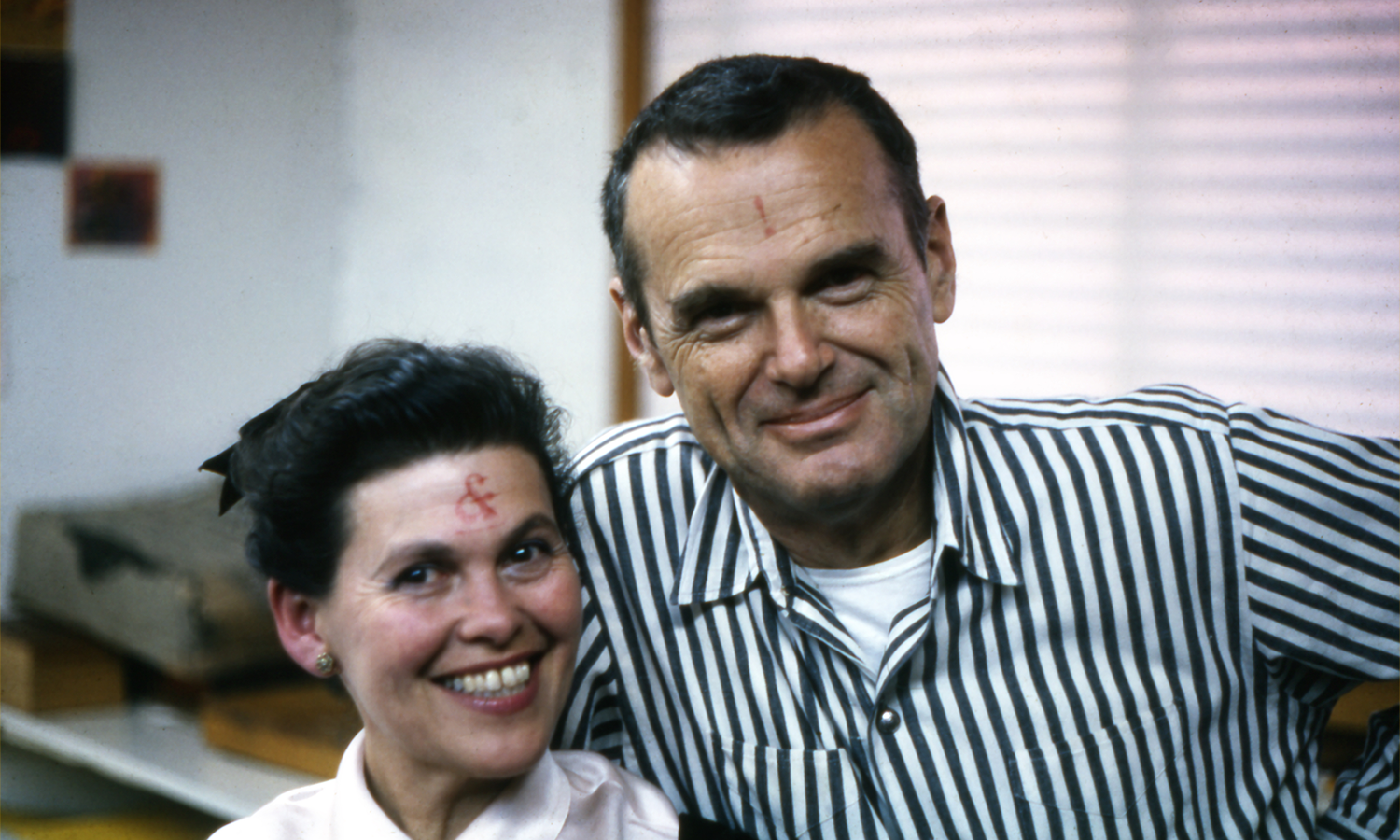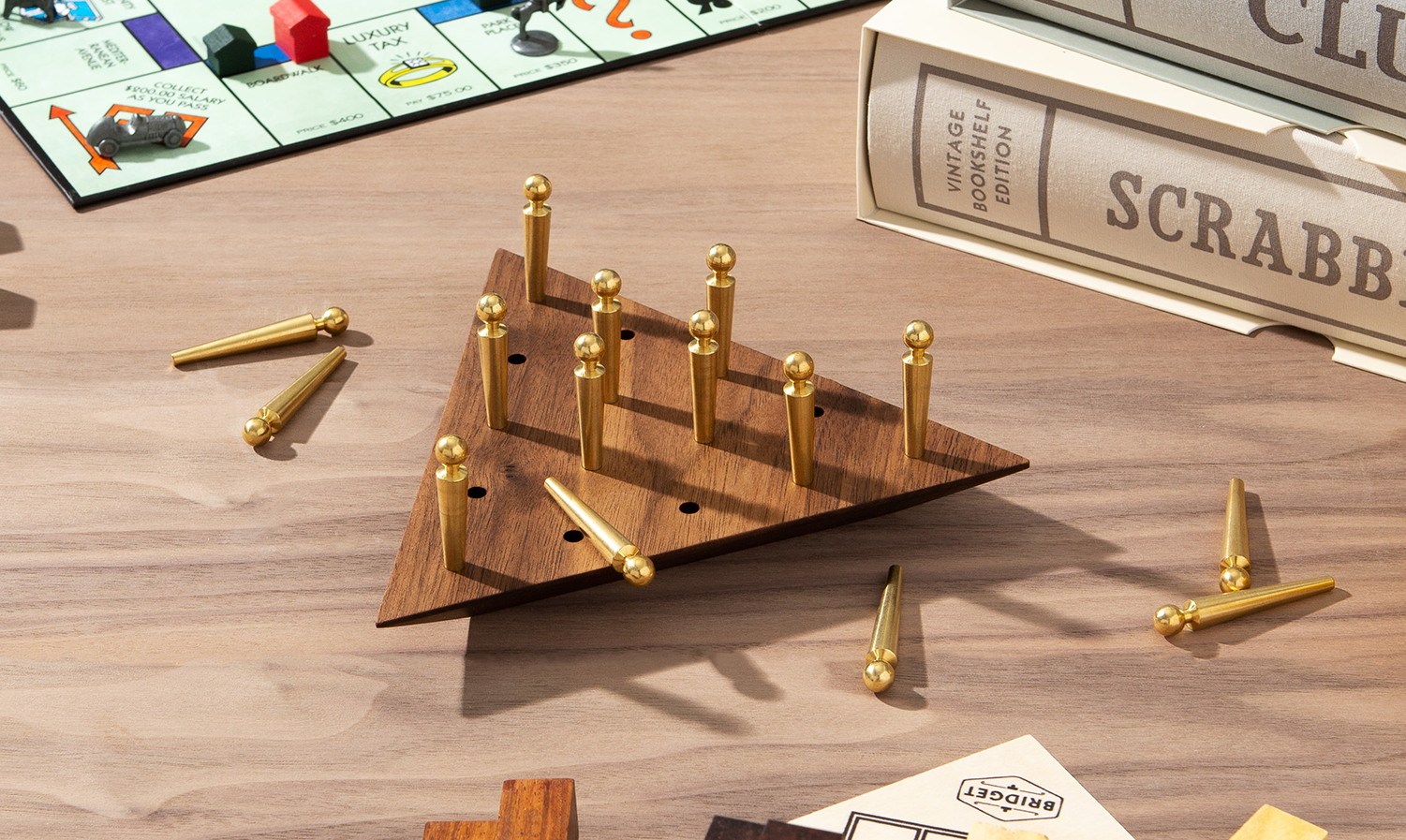Charles Eames and Bernice Alexandra "Ray" Eames are two of the most influential designers in furniture history and modern art. Married in 1941, the couple soon established a studio in Venice Beach, California, and produced the curvy and colorful "Eames Chair" after developing an innovative technique for molding plywood.

The decades-long collaboration between Charles, an architecture student, and Ray, an abstract artist, was the topic of a 2011 documentary, Eames: The Architect and the Painter. The Eames studio, which attracted design students from around the world, quickly became a hotspot of creative thinking and pioneering vision. Large companies contracted with the Eames for projects like IBM World’s Fair Pavilion (1964) and the SX-70 Polaroid camera (1972).
Charles and Ray understood the importance of play as a form of experimentation and creativity and borrowed from architecture, math, physics, interior design, psychology, art theory and philosophy. This playful approach is evident in many of their designs, which often featured unexpected elements. Their use of industrial materials like aluminum, plastic and wire mesh for furniture, light fixtures and objects of art is a foundational principle of the style they cultivated, now known to the world as “mid-century modern.”
“The details are the details . . . It will in the end be these details that give the product its life.”
As collaborators, the married couple worked side-by-side for decades in their Los Angeles studio, sharing decisions on ideas, processes, and daily affairs. To the outside world, Charles was viewed as the studio’s principal designer because, in their time, women’s contributions were often undervalued and discredited. Ray assumed the role of wife and secondary contributor in spite of her graduate-level education in fine art at the Cranbrook Academy, the school where the two had met and fallen in love. And even though Charles was considered head of the studio, Ray’s artistic vision—especially with color—undoubtedly affected the direction of the couple’s most important work.
Collaboration was especially evident in the couple’s early years. A sculpture featured on the September 1942 issue of Arts & Architecture, for example, was described inside the magazine’s pages in a way that detailed the contributions of each: “A piece of wood sculpture by Ray Eames designed in a complex form to take advantage of a system of molding laminated wood developed by Charles Eames.” This same sculpture was later referenced as a foreshadow to the couple’s landmark design—the Eames chair.
The Playful Design of Ray and Charles Eames
The Eames House of Cards is a deck developed in 1952 that challenges players to build interlocking structures with large cards printed on both sides with collage elements like primitive art and scientific photography. Originally conceptualized as a pastime for the Eames grandchildren, the game continues today as a way to experiment with shape, color and pattern. It's just one example of how Charles and Ray taught the world to approach modern living with curiosity, creativity and, most importantly, playfulness. Charles once said: “Toys are not really as innocent as they look. … Toys and games are precursors to serious ideas.”

Our playing cards speak to this same mission in their color and style. The faces of the cards have a special numbering system that pays homage to the Eames' classic film Powers Of Ten. The court cards honor the use of geometric shapes, and the back of each card features the Eames’ Office starburst logo.

The Eames' philosophy on design was that it should be available to all people, and their belief in democratic design is what we try to uphold today. Charles and Ray also didn't believe in designing something just for the sake of design. They thought about how each form could be used and what it could bring to people's lives. In an interview with the Smithsonian, Ray said,
"The chair has to be both things: It has to look good and it has to be comfortable."
The Eames family wanted their designs to help people experience the world through modern art. By applying this philosophy, designers can create connections to the past. For example, the Eames House Bird (sold at the Herman Miller store) is a reproduction of a folk art figurine that Charles used to complement the modern furniture in the Eames' family living room.
Beyond Chairs
Furniture design is often seen as a utilitarian field, but the Eames family showed that it can be an art form too. The Eames family actively sought out new technology and materials, but they also used traditional design elements in creative ways. Their wire chairs of the 1950s, for example, were inspired by basket-weaving techniques borrowed from folk art.

Charles and Ray's legacy continues not only through their furniture designs, which are still popular and highly sought after, but also through the way they approached design as a mission with purpose. Charles and Ray's love for experimentation with new materials lead them to the invention of a heat and pressurization device called Kazam!, which allowed Ray to mold plywood using a system of tiny holes that allowed the wood to sustain pressure. This led him into producing lightweight splint legs for World War Two servicemen who'd sustained injuries from combat or accidents overseas.

In their later years, Charles and Ray founded the Eames Foundation, which aimed to preserve their work as well as educate the public about design. Charles' daughter, Lucia Eames, spent her life curating her family's legacy (which included her own pieces). The Eames house, which preserves their legacy, is open for tours.

Photo by Timothy Street-Porter
The Eames were ahead of their time with how they approached modern design as problem-solvers who enhanced people's lives for generations. Today, we can see Charles and Ray's legacy in everything from the many takes on the "Eames office" to our furniture at home. As the couple who made “modern” more than a term but a way of life, their impact on our surroundings can be seen in everything from the smallest detail of a kitchen spatula to the newest collections at today’s most chic home stores. “The details are the details . . . ” Charles said. “It will in the end be these details that give the product its life.”

You can browse our collection of Home Goods for ideas on how to style your own space in their playful ethos.
Written by Anne-Marie Yerks
All images © Copyright Eames Office, LLC







